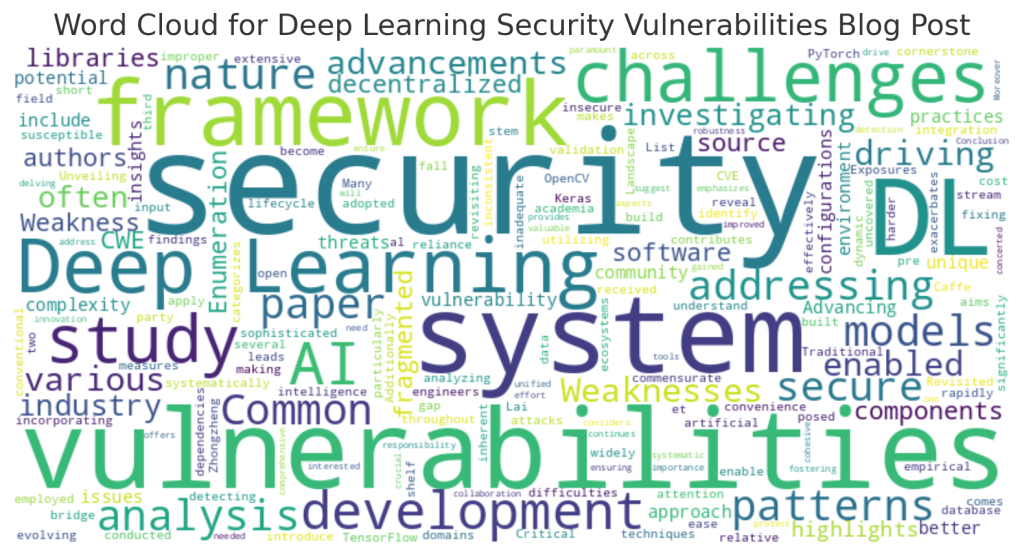
Image: wordcloud based on the text of the article
In the rapidly evolving artificial intelligence (AI), deep learning (DL) has become a cornerstone, driving advancements based on transformers and diffusers. However, the security of AI-enabled systems, particularly those utilizing deep learning techniques, are still questioned.
The authors conducted an extensive study, analyzing 3,049 vulnerabilities from the Common Vulnerabilities and Exposures (CVE) database and other sources. They employed a two-stream data analysis framework to identify patterns and understand the nature of these vulnerabilities. Their findings reveal that the decentralized and fragmented nature of DL frameworks contributes significantly to the security challenges.
The empirical study uncovered several patterns in DL vulnerabilities. Many issues stem from improper input validation, insecure dependencies, and inadequate security configurations. Additionally, the complexity of DL models makes it harder to apply conventional security measures effectively. The decentralized development environment further exacerbates these issues, as it leads to inconsistent security practices and fragmented responsibility.
It does make sense then to put a bit of effort into securing such systems. By the end of the day, input validation is no rocket science.

